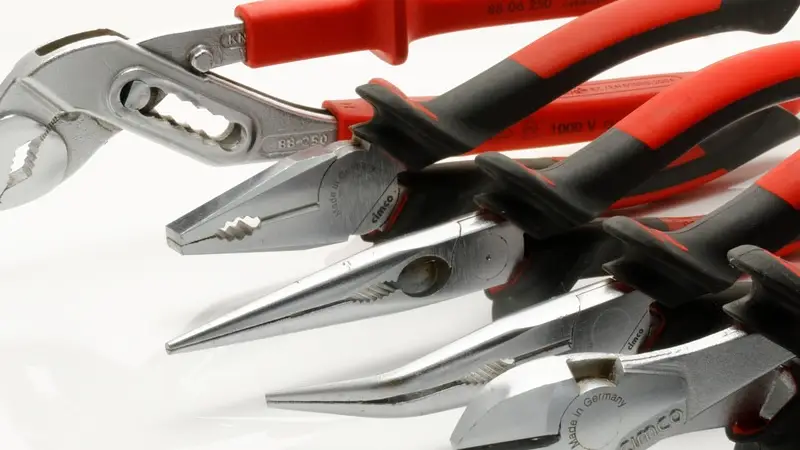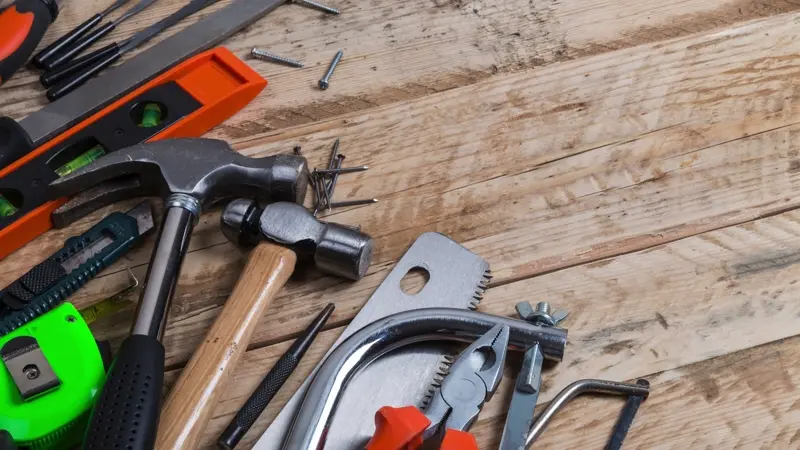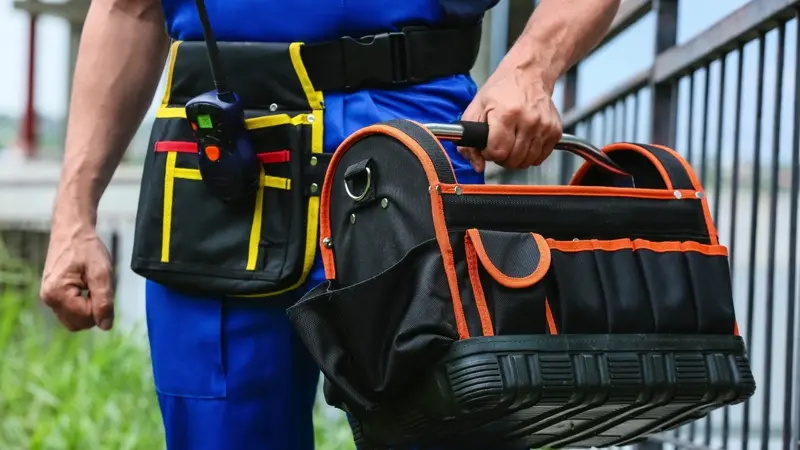Pliers are an essential tool found across both professional and DIY environments, renowned for their versatility. Their design variety, from the sturdy lineman and slip-joint versions favored by electricians to the delicate needle-nose pliers preferred by jewelers, facilitates a wide range of tasks such as gripping, bending, twisting, or cutting through materials. Let’s explore some of the most common plier types and their uses.
Table of Contents
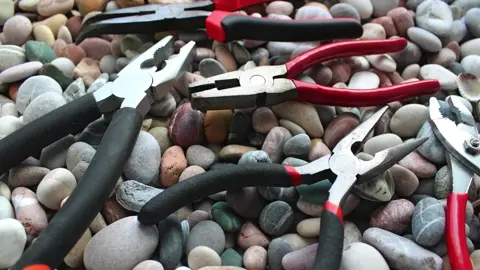
What are Pliers, and What Types are Most Commonly Used?
Pliers are indispensable tools across multiple industries, offering functionality that ranges from gripping and bending to precise cutting. These versatile instruments consist of two handles joined by a pivot, with jaws that can manipulate objects for various tasks. It’s important to select the right size and type of pliers for your specific job to ensure safety and efficiency. Featuring a vast array of sizes and styles, pliers are tailored to fit the requirements of different tasks, each type boasting unique capabilities and specialized features to accommodate particular applications and materials.
The most commonly used pliers include:
1. Lineman’s Pliers
These multipurpose pliers are your best friend whether you’re a DIY enthusiast or a professional engineer. Typically used for gripping, twisting, and cutting objects like wires, bolts, and sheet metal, lineman’s pliers are a go-to tool for tons of tasks. While these pliers can strip insulation from wire as well, they’re not as efficient at this job compared to dedicated wire strippers. Despite some overlap with slip joint pliers, lineman’s pliers have some marked differences – like an outer fixed jaw wire cutting notch. Many people in the industry swear by lineman’s pliers for their dependability, lightweight build, and affordability.
2. Slip Joint Pliers
Slip joint pliers are quite a handy tool to have in your collection as they come with an adjustable pivot point, also known as the fulcrum. This nifty feature gives you the freedom to increase the jaw range as needed, making them perfect for working with various sizes of materials. Because of their adaptability, they’re an excellent choice for tasks that require manipulating different materials precisely and accurately. Plus, they’re budget-friendly and available in a range of shapes and sizes, so you can find the perfect fit for your needs.
By simply tweaking the fulcrum, you can adjust these pliers to grip objects like nuts and bolts that might be larger or smaller than their original design intended. While they may not deliver the same force as other plier types, they’re more than capable of tackling less demanding work that calls for some flexibility.
3. Diagonal Pliers
You’ve probably spotted diagonal pliers, also known as diagonal cutters, side-cutting pliers, or snips, in many toolboxes. They’re incredibly useful for cutting all sorts of wire and are an essential tool for construction projects or electronics work.
Usually made of hard metal like steel, diagonal pliers are highly durable and capable of cutting tough materials. The handles on these pliers come in various shapes and sizes, so it’s essential to find one that feels comfortable in your hand.
4. Nose Pliers
Whether you’re tackling a repair job or diving into a DIY project, there may come a time when you need nose pliers. These trusty tools help you reach tight spaces and grab components that might otherwise be out of reach. No matter your project, having the right nose pliers will make it far easier to execute the job well.
There’s quite a range of nose pliers available – long nose pliers and bent nose pliers being particularly useful for those hard-to-reach spots. Some of the most common types include:
Needle Nose: A staple in any jewelry designer or artisan’s workshop, needle nose pliers are known for their precision and ability to reach tight spaces. Particularly useful when cutting wire and making delicate adjustments, these pointy-nose, or snipe-nose, pliers are perfect when crafting intricate wirework pieces. Their versatile shape and size make them suitable for various tasks, often becoming a firm favorite among experienced jewelry makers.
Bent Nose: As the name suggests, bent nose pliers have a curved angle at the tip to help you reach tricky spots with greater control and precision. Often boasting 45-degree bends, they’re easily distinguished from traditional needle-nose pliers. Put simply – if you’ve got a tight space to work with, bent nose pliers are your friend.
Round Nose: Also known as “rosary pliers” or “chain nose pliers,” round nose pliers have rounded and tapered jaws that make them ideal for precision work like creating loops and bends in wires. Many even come with built-in cutters to snip off excess wires or materials easily. You’ll frequently find them in the hands of those working on jewelry or electronic projects.
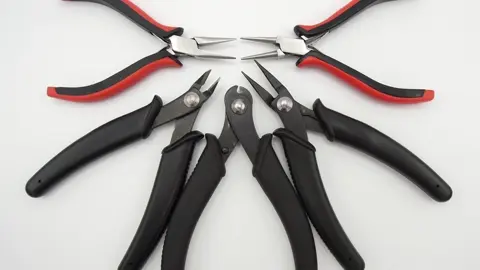
5. Locking Pliers
Commonly called Vise Grips or Mole grips, locking pliers provide a strong, repeatable grip for precision work or holding objects in place. By adjusting the bolt on the handle, you can control the distance between the jaws to ensure a steady hold. These reliable tools are loved by users across the globe.
6. Sheet Metal Pliers
Sheet metal pliers are handy when working with industrial materials like, well, sheet metal. With wide, rectangular jaws and curved edges for added security, these pliers make it a breeze to cut or bend materials. The long handles give you that extra bit of control and precision when working.
7. Canvas Pliers
A must-have for artists of all kinds, canvas pliers assist in stretching canvases and holding objects in place while applying glue. With an array of sizes and designs available, the serrated-edge blades make efficient cutting possible, catering to various canvas-related techniques.
8. Nail Puller Pliers
These pliers are designed to quickly and easily remove nails from various materials without causing damage to their surroundings. From construction workers and carpenters to home DIY enthusiasts alike, nail puller pliers take the effort out of removing nails while still providing impressive grip and range of motion.
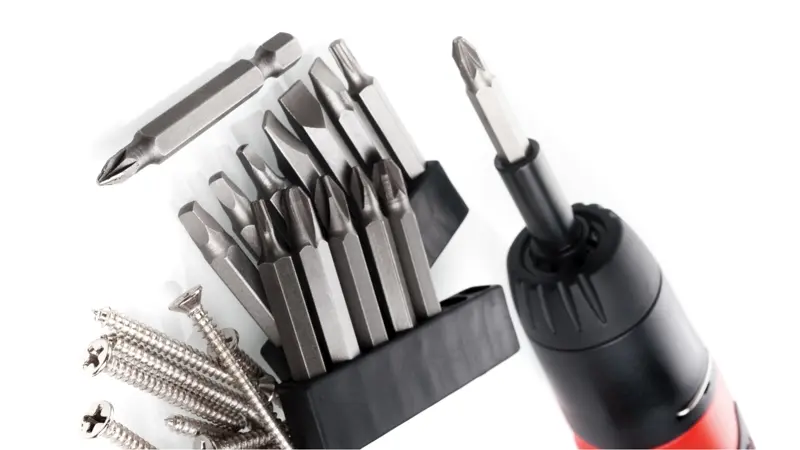
The Bottom Line
pliers are a fundamentally versatile tool used across numerous industries, tailored to meet a myriad of specific tasks ranging from wire manipulation to the tightening of fastenings. Their various sizes, shapes, and handle designs contribute to their practicality and ease of use. Understanding how to properly select and utilize the appropriate type of pliers is crucial for ensuring safety and enhancing efficiency in any project that requires their use.
